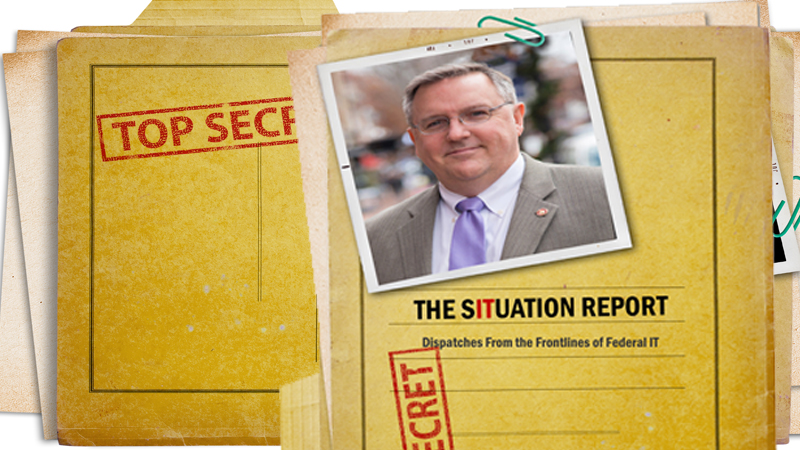The Situation Report: OMB’s Digital Disconnect, Video Storage, and Richard McKinney

Digital Disconnect
My intelligent video surveillance devices mounted throughout the New Executive Office Building (NEOB)—which, you might recall from a recent Tweet, picked up signs of elevator graffiti depicting the Office of Management and Budget director as Frankenstein—are now streaming footage directly into The Situation Report’s digital video storage and analytics system. And that has produced some interesting intelligence.
U.S. Chief Information Officer Tony Scott is reportedly concerned about the survival of the U.S Digital Service once the Obama administration cuts the cord and moves out of the House. Signals intelligence intercepts indicate that Scott is a true believer in USDS but, like many, wants to see the government’s “big problems” added to the USDS list of priorities. Those same intercepts have picked up signals that Scott is preparing his transition plan, which he hopes will lay the foundation for continued progress on the IT reform front—even under a President Trump.
But all is not well on the digital front. My OMB listening post has intercepted rumblings that some agencies aren’t drinking the Kool-Aid being supplied by the USDS and the General Services Administration’s 18F. “There’s also a disconnect between the success they believe is true and what their customers believe is true,” according to one well-placed mole.
The digital disconnect between USDS, 18F, and their agency customers has not been lost on Deputy CIO Lisa Schlosser, who threatened to hold agencies and IT vendors “accountable” if they do not use the Digital Services Playbook. According to The Situation Report’s confidential informant, Schlosser’s threats of greater accountability are really about withholding funding for those who refuse to blow the dust off the Digital Services Playbook cover.
Analysis: There’s a deeper culture clash at play here. There are a lot of career Federal IT professionals who have spent the better part of the last two years watching as OMB and GSA actively recruit “tomorrow’s Federal IT workforce.” The only problem is that to some tomorrow feels like it means literally tomorrow, or very soon thereafter. Schlosser recently tried to reassure career govies that the digital recruitment efforts aren’t about “displacing” current workers. But it might have been better not to have kicked that hornet’s nest.
[the_ad_group id=”473″]
Video Data Deluge
There’s no question that the quality of video surveillance systems is improving dramatically. But a new white paper, obtained by The Situation Report, reveals that storing and analyzing that footage is presenting massive challenges for agencies at all levels of government.
By 2020, video surveillance is expected to generate 3.3 trillion video hours—859 petabytes—of surveillance footage every day. “Add real-time CCTV footage to the mix—and you’re swimming in a video vortex,” according to Quantum Corp.’s analysis.
Having more video footage—and better quality video footage—sounds like a good thing. But the reality is that the exponential growth in video surveillance is driving a data deluge that can easily swamp networks and cripple IT infrastructures. Federal, state, and local agencies, particularly law enforcement agencies, face difficult questions—how to manage these massive, complex workflows, how to access these massive data sets in a timely fashion so that serious crimes can be solved or prevented, and, of course, how to pay for these new technology requirements.
For example, my Big Easy listening post reports that the New Orleans Police Department has budgeted $1.2 million over five years just to pay for the data storage to support 350 police body cameras. In San Diego, the local police department signed a five-year deal for 1,000 body cameras, including a whopping $3.6 million just for storage, software licenses, maintenance, and related equipment.
To learn more about the availability of technology solutions that can help balance the competing needs of performance, reliability and cost-efficiency, download the new white paper, Getting the Full Picture.
Personnel Predictions

My LinkedIn surveillance radar has picked up weak, but compelling, signals that Department of Transportation CIO Richard McKinney—one of the first CIOs to truly embrace the new authorities granted under the Federal Information Technology Acquisition Reform Act (FITARA)—is planning his exit from government.
Nothing says “I need to keep my options open” more than a LinkedIn request for a profile endorsement.
Picked up any signals for The Situation Report? Forward them in confidence via email or direct message on Twitter.
